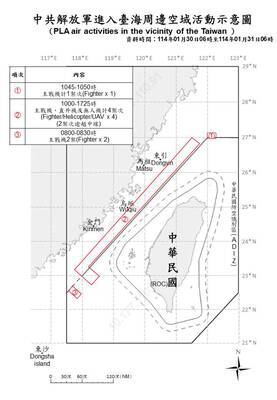The Canadian government on Tuesday alleged that Indian Minister of Home Affairs Amit Shah was behind plots to target Sikh separatists on Canadian soil.
The Indian government did not immediately respond, but has called Canada’s prior accusations baseless, denying any involvement.
The Washington Post first reported that Canadian officials alleged Shah, considered the No. 2 in the government of Indian Prime Minister Narendra Modi, was behind a campaign of violence and intimidation targeting Sikh separatists in Canada.

Photo: Reuters
Canadian Deputy Minister of Foreign Affairs David Morrison on Tuesday said at a parliamentary panel that he told the newspaper that Shah was behind the plots.
“The journalist called me and asked if it was that person [Shah]. I confirmed it was that person,” Morrison told the committee, without providing further details.
The High Commission of India in Ottawa and the Indian Ministry of Foreign Affairs had no immediate comment.
The Indian Ministry of Home Affairs directed queries to the foreign ministry.
Canada told India about Shah’s alleged role in the plots in October last year, one Indian government source told Reuters in New Delhi yesterday.
However, New Delhi thinks the information is very weak, flimsy and does not expect it to cause any trouble for Shah or the government, the source and another government source said.
Both spoke on condition of anonymity as they were not authorized to speak to the media.
India has called Sikh separatists “terrorists” and threats to its security. Sikh separatists demand an independent homeland known as Khalistan to be carved out of India.
Canada has expelled Indian diplomats, linking them to last year’s murder of Sikh separatist leader Hardeep Singh Nijjar on Canadian soil.
New Delhi also ordered the expulsion of Canadian diplomats from India.

UNITED: The premier said Trump’s tariff comments provided a great opportunity for the private and public sectors to come together to maintain the nation’s chip advantage The government is considering ways to assist the nation’s semiconductor industry or hosting collaborative projects with the private sector after US President Donald Trump threatened to impose a 100 percent tariff on chips exported to the US, Premier Cho Jung-tai (卓榮泰) said yesterday. Trump on Monday told Republican members of the US Congress about plans to impose sweeping tariffs on semiconductors, steel, aluminum, copper and pharmaceuticals “in the very near future.” “It’s time for the United States to return to the system that made us richer and more powerful than ever before,” Trump said at the Republican Issues Conference in Miami, Florida. “They

GOLDEN OPPORTUNITY: Taiwan must capitalize on the shock waves DeepSeek has sent through US markets to show it is a tech partner of Washington, a researcher said China’s reported breakthrough in artificial intelligence (AI) would prompt the US to seek a stronger alliance with Taiwan and Japan to secure its technological superiority, a Taiwanese researcher said yesterday. The launch of low-cost AI model DeepSeek (深度求索) on Monday sent US tech stocks tumbling, with chipmaker Nvidia Corp losing 16 percent of its value and the NASDAQ falling 612.46 points, or 3.07 percent, to close at 19,341.84 points. On the same day, the Philadelphia Stock Exchange Semiconductor Sector index dropped 488.7 points, or 9.15 percent, to close at 4,853.24 points. The launch of the Chinese chatbot proves that a competitor can

TAIWAN DEFENSE: The initiative would involve integrating various systems in a fast-paced manner through the use of common software to obstruct a Chinese invasion The first tranche of the US Navy’s “Replicator” initiative aimed at obstructing a Chinese invasion of Taiwan would be ready by August, a US Naval Institute (USNI) News report on Tuesday said. The initiative is part of a larger defense strategy for Taiwan, and would involve launching thousands of uncrewed submarines, surface vessels and aerial vehicles around Taiwan to buy the nation and its partners time to assemble a response. The plan was first made public by the Washington Post in June last year, when it cited comments by US Indo-Pacific Commander Admiral Samuel Paparo on the sidelines of the Shangri-La Dialogue

MARITIME SECURITY: Of the 52 vessels, 15 were rated a ‘threat’ for various reasons, including the amount of time they spent loitering near subsea cables, the CGA said Taiwan has identified 52 “suspicious” Chinese-owned ships flying flags of convenience that require close monitoring if detected near the nation, the Coast Guard Administration (CGA) said yesterday, as the nation seeks to protect its subsea telecoms cables. The stricter regime comes after a Cameroon-flagged vessel was briefly detained by the CGA earlier this month on suspicion of damaging an international cable northeast of Taiwan. The vessel is owned by a Hong Kong-registered company with a Chinese address given for its only listed director, the CGA said previously. Taiwan fears China could sever its communication links as part of an attempt